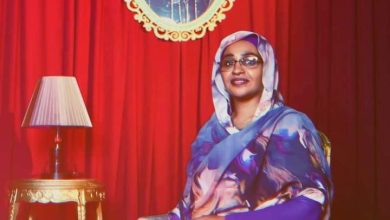The October 21 Revolution in prose

Alsir Alsayed
I would like to point out at the beginning that the revolution of October 21, 1964, despite its impact and its occurrence in an era that was distinguished internationally and Sudanese (the sixties), did not find much success in Sudanese writing in its various manifestations, nor in the Sudanese arts in its various forms with the exception of poetry and singing. The collection of Sudanese poetry celebrated it with many glorious poems about it, and Sudanese singing celebrated it with many wonderful chants and songs about it, until it became in the imagination of the majority, especially the generations that did not witness it, an experience that settled in poetry and was celebrated at its best until it remained a trace in the songs passed down to the youth. As Dr. Abdullah Ibrahim pointed out, as much as its star shone in poetry and singing, it dimmed in prose and other forms of art. With such a long life, we can hardly find books that have come close to documenting and analyzing it, and during distant periods, other than the documentary book “People’s Revolution,” which was issued by the Sudanese Communist Party, once in the year 1965 AD, and then the book “The Victorious Revolution – October 21 – Day by Day” by Professor Ahmed Muhammad Shamouk, in which he based it mainly on the book “People’s Revolution,” as he pointed out. The first edition of the book The Victorious Revolution was published in the year 1969, and then the book was finally published in the New Khartoum Book Series issued by the Khartoum Press and Publishing Authority in the year 2010, this is in addition to Clive Thompson’s book “Diary of the October Revolution 1964”, then the book “The Spring of the October Revolution 1964” by Dr. Abdullah Ali Ibrahim, which was published in 2013 AD by the Khartoum Press and Publishing Authority, then finally the book “Fifty Years after the October Revolution.” Sudanese 64-2014… The Early Rise of Sudan,” edited by Haider Ibrahim, Muhammad Mahmoud, Abdul Salam Nour al-Din, and Abdul Wahab Hemmat. It contains a collection of articles, testimonies, interviews, and appendices. It was issued by the Sudanese Studies Center in 2014. Of course, in addition to these prose books of a documentary and analytical nature, there are articles that have been written, and references to the revolution contained in some memoirs and documents of Sudanese parties, especially the Sudanese Communist Party, and this, to me, is a very sad matter! “Can’t prose help poetry in restoring October’s honor? When will thought catch up with the hymn?”
As Dr. Abdullah Ali Ibrahim wrote… This is in the context of prose writing with an intellectual or political orientation. As for the context of writing with an “artistic and literary” orientation, such as theatrical or novel writing, the matter is even more miserable. It was provided to me, and after I sought the help of those who had previous knowledge in this field, searching for the presence of the October Revolution in the Sudanese novel, it was provided to me through an oral statement he gave me. The well-known critic and translator Dr. Ahmed Al-Sadiq, which is the same as in his article “Jamal Mahjoub’s Narrative Worlds” published in his book “Revealing the Conditions of Writing”, informed me that the October Revolution appeared in two novels written in the English language in the late sixties.. The first, and it can be translated to “Their Most Beautiful Days” for Alsir Hassan Fadl, and the second can be translated to “The Dawn of Salvation” and it is “Taj Al-Sir Mahjoub.”
As for theatre, theater critic Al-Bashir Sahl informed me that a playwright from the city of Kosti wrote a play about the October Revolution, but Al-Bashir could not remember the name of the writer, nor the name of the play. Accordingly, the only three plays I have available that deal with the October Revolution are, and fortunately, they have been published. The first is the play (October Epic) by Zainab Musa Muhammad. It was written in the year 1965 and is in the Sudanese National Archives. The second is the play (The Palace and Victory) by Abdullah Ali Ibrahim, which was written in the year 1969 and published more than once. The third is a play (The October 21 Revolution) by Mahdi al-Tayeb, which was published in the year 1969. The urgent question here is: Why was there not a revolution with all this splendor, especially since it occurred in a period that was distinguished, as we mentioned, globally and in Sudan? Why did it not form a significant presence in prose in its various forms and a presence in artistic and literary writing such as novels and theater and a presence in other forms of art, despite its impact and long life? Why was it absent or absent like this, I wonder? Why?
The importance of the question comes when comparing it in the theater, for example, with the presence of (the Mahdist Revolution). It has been observed that nearly ten plays written about the Mahdist Revolution, have been written by Sudanese and Arab writers.



